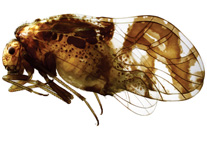Abstract
Continued uncertainty persists over the taxonomic status of many threatened Caribbean mammal populations. Recent molecular analysis has identified three genetically isolated allopatric hutia populations on Hispaniola that diverged during the Middle Pleistocene, with observed levels of sequence divergence interpreted as representing subspecies-level differentiation through comparison with genetic data for other capromyids. Subsequent analysis of existing museum specimens has demonstrated biogeographically congruent morphometric differentiation for two of these three populations, Plagiodontia aedium aedium (southwestern population) and P. aedium hylaeum (northern population). We report the first craniodental material for the southeastern Hispaniolan hutia population, and demonstrate that this population can also be differentiated using quantitative morphometric analysis from other Hispaniolan hutia subspecies. The holotype skull of P. aedium aedium, of unknown geographic provenance within Hispaniola, clusters morphometrically with the southwestern population. The southeastern Hispaniolan subspecies is described as Plagiodontia aedium bondi subsp. nov., and is assessed as Endangered under Criterion B1a,biii,v on the IUCN Red List.

